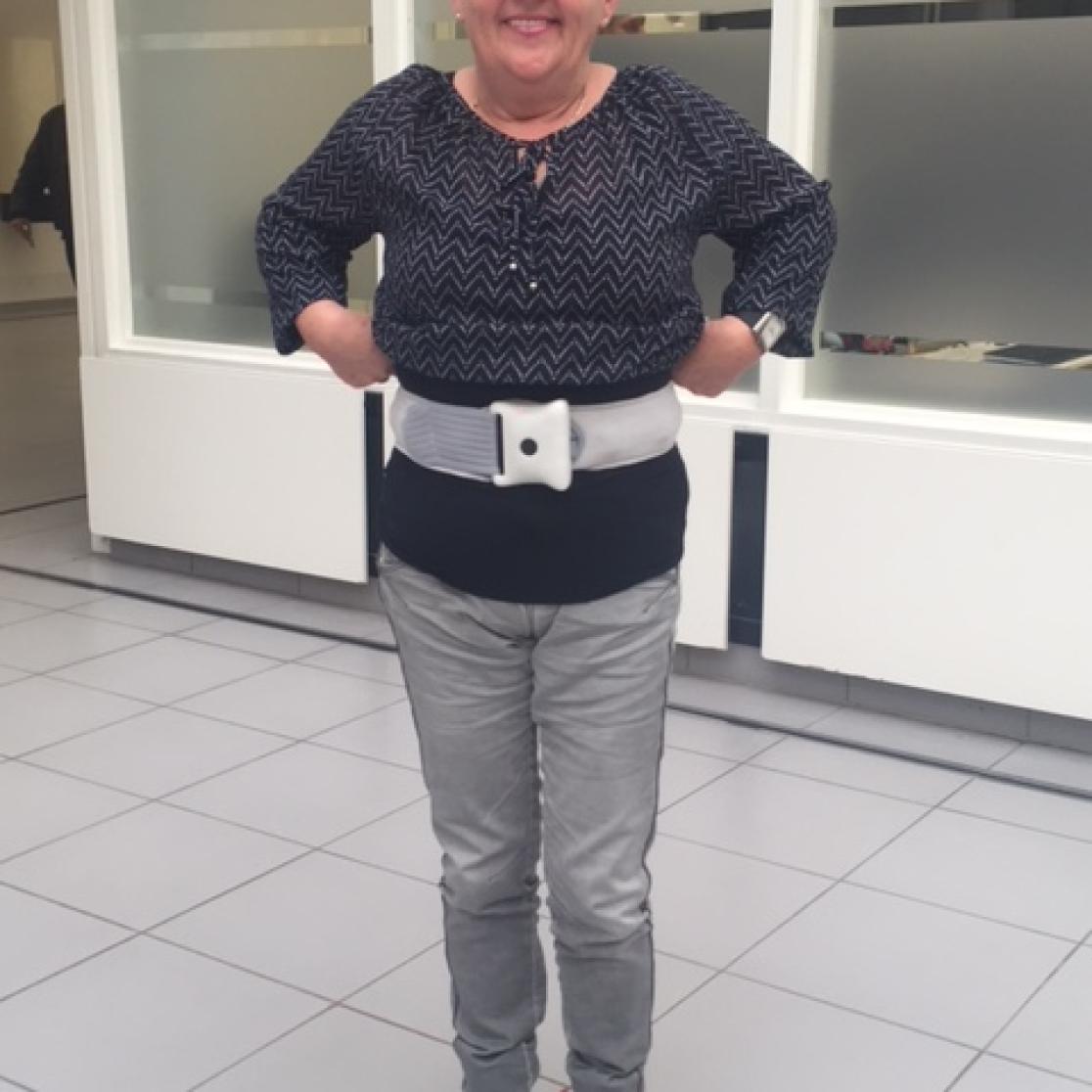Back on stage thanks to the balance belt
Ms. Bongers (66 years old) is over the moon: today is the day when she finally receives her balance belt. Four years ago, her life changed dramatically when she experienced a balance disorder, most likely as a result of chemotherapy. ‘Walking became an ordeal. I was in constant fear of falling over and felt dizzy with every step. Because of my lurching gait, people thought I was drunk and started avoiding me.’ The balance belt she will start wearing today will vibrate slightly if it detects her body swaying excessively in any one direction, which will allow her to correct her posture. Ms Bongers beams with pleasure as she takes her first steps down the MUMC+ corridor without fear of losing her balance. ‘Now I can celebrate Carnival again – I’ve missed being on stage!’
Very few people are able to use this innovative belt, which was developed by IDEE on the initiative of Herman Kingma, professor emeritus at MUMC+. This is because this highly expensive device has not yet been approved for medical use, meaning its cost is not covered by health insurance. However, a contribution from the University Fund Limburg, which collected €25,000 in sponsorship money by participating in the Zweit Veur Leid (Sweat To Relieve Suffering) charity run, has enabled four patients to become the proud owners of a balance belt. If it had not been for the intervention of the fund, it would have been doubtful if anyone would have had access to it.
‘Obviously, our efforts do not stop there. We are constantly looking towards progress and the future. Unfortunately, existing therapies have proven ineffective in the treatment of severe balance disorders. This type of disorder has a negative impact on the quality of life. In the near future, therefore, we hope to be able to reduce the cost price of the belt without this leading to a loss of quality and we are also in the process of having it approved as a medical device. Our ultimate objective is to help many more people. MUMC+’s Vestibulology department continues to develop an artificial vestibular system in collaboration with the Geneva University Hospitals. The first prototypes have now been submitted and the results are promising. However, it will take another five to ten years for this device to be ready for clinical use. Moreover, this will require considerable investment,’ according to Mr R. van de Berg, vestibulologist and professor Kingma’s successor.
